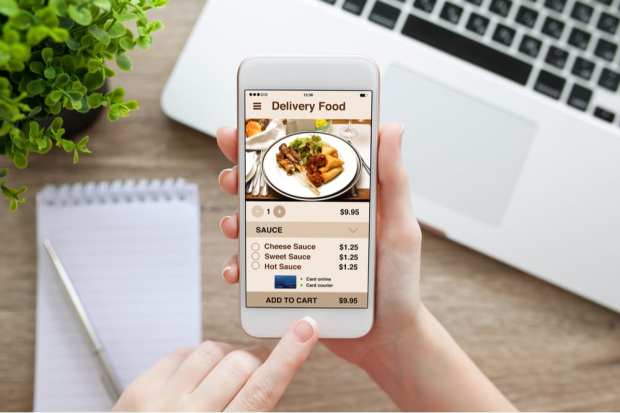How Ghost Kitchens Are Altering The QSR Landscape

As more consumers place their food orders through digital channels, eateries are adapting to the tastes of diners who want to enjoy a restaurant meal at home. P.F. Chang’s, in one case, is set to open a P.F. Chang’s To Go location in Chicago that will focus on carryout, delivery and catering, with delivery offered through third-party services as well as the restaurant’s website and app.
And in Tampa, a family of local eateries called Frenchy’s Restaurants plans to launch its Frenchy’s To Go concept. The company intends to make a “hybrid” ghost kitchen out of an old Chick-fil-A that will offer items such as garlic crab fries and grouper sandwiches. Diners will place orders via third-party online food delivery platforms, phone or the restaurant’s website.
According to the PYMNTS Order to Eat Tracker, “ghost kitchens, which prepare food for delivery and pickup orders, appear to be gaining steam.” And self-service kiosks, which were once only mainstays in airports, banks and supermarkets, are also “now spreading rapidly across the restaurant space,” per the report.
From Chipotle Mexican Grill to DoorDash, quick-service restaurants and technology platforms are making it easier for consumers to order their favorite foods. These are just some of the ways companies are tapping into the latest restaurant innovations with the help of technologies such as artificial intelligence (AI) and automated retail:
Among diners, 71 percent would be open to QSRs incorporating AI. QSRs are incorporating the technology into their business models. Chipotle Mexican Grill, in one case, announced an Alexa skill in November that allows diners to reorder Chipotle meals with the voice assistant for delivery or pickup. Diners download the Amazon Alexa app, turn on the Chipotle skill, connect profiles and then reorder Chipotle meals. Chipotle Vice President of Digital Strategy and Product Management Nicole West said in an announcement at the time, “We always strive to introduce additional access points in the Chipotle ordering experience and overall digital ecosystem. With this new skill for Alexa, our customers can get their favorite Chipotle orders delivered straight to their door in the most convenient way possible – all they need to do is ask.”
The share of U.S. fast-food customers who pay with cash is 30 percent. Legislators are crafting laws to ensure that consumers can pay with cash. Philadelphia lawmakers passed a ban on cashless stores, making it the first major city in the U.S. to do so, per news in March. The new law would require most retail outlets to accept physical currency. Supporters of the measure said it was the correct move for people who don’t have credit or debit cards, as well as those who prefer to pay with currency for privacy reasons. Businesses, however, noted that going cashless bolsters safety and efficiency, removing the need to carry large envelopes of money to the bank at night or to count large amounts of cash.
DoorDash commands 35 percent of the third-party delivery market. The food delivery platform recently overtook Grubhub as the No. 1 food delivery service in the United States. It will also team with Little Caesars Enterprises Inc. to supply pizza delivery services from 3,600 restaurants in Canada and the U.S. Orders will arrive through Little Caesars’ mobile app and website and then will be sent to the DoorDash driver fleet for fulfillment through the DoorDash Drive service. DoorDash will cover roughly 90 percent of Little Caesars’ Canada and U.S. locations. Based in Detroit, Michigan, Little Caesars has stores in all 50 U.S. states and 24 countries. It was reported that the QSR chain would not require customers to make minimum purchases to receive deals and would not restrict discounts to carryout orders.
Ninety-two percent of consumers purchase food at drive-thrus at least once a month. News surfaced in March that the AI-powered personalization platform operator Dynamic Yield was being acquired by McDonald’s. The fast-food chain would reportedly deploy the technology in its outdoor digital drive-thru menu displays, in addition to other customer touchpoints such as self-order kiosks. At the time, it was noted that Dynamic Yield enables over 300 brands in six continents. Its technology helps companies build customer profiles, automate decision-making for customers and launch and optimize personalization campaigns. As noted this month, McDonald’s has created a dedicated digital customer engagement team to focus on digital initiatives and technologies.
The share of consumers who have used a kiosk in the past year is 65 percent, and QSRS are tapping into the technology. Luckin Coffee, in one case, recently announced that it is entering the automated retail market with the launch of the EXPRESS smart unmanned coffee machine and a Luckin popMINI smart vending machine. Luckin’s EXPRESS provides “freshly brewed drinks with the same quality and taste as in Luckin stores,” per the announcement. The “biggest attraction” of the popMINI is what the company calls “eCommerce prices in vending machines.” Luckin Coffee CEO Jenny Zhiya Qian said in the announcement, “Luckin Coffee’s unmanned retail network, store footprint and eCommerce channels together form our proprietary omnichannel customer traffic network.”
From McDonald’s to DoorDash, restaurants and technology platforms are driving digital ordering innovation. While fast-casual restaurants are looking for ways to differentiate themselves and often turn to self-service kiosks, it takes more than simple implementation to nourish repeat business and generate customer loyalty: Restaurants must select the right third-party delivery partner as well.